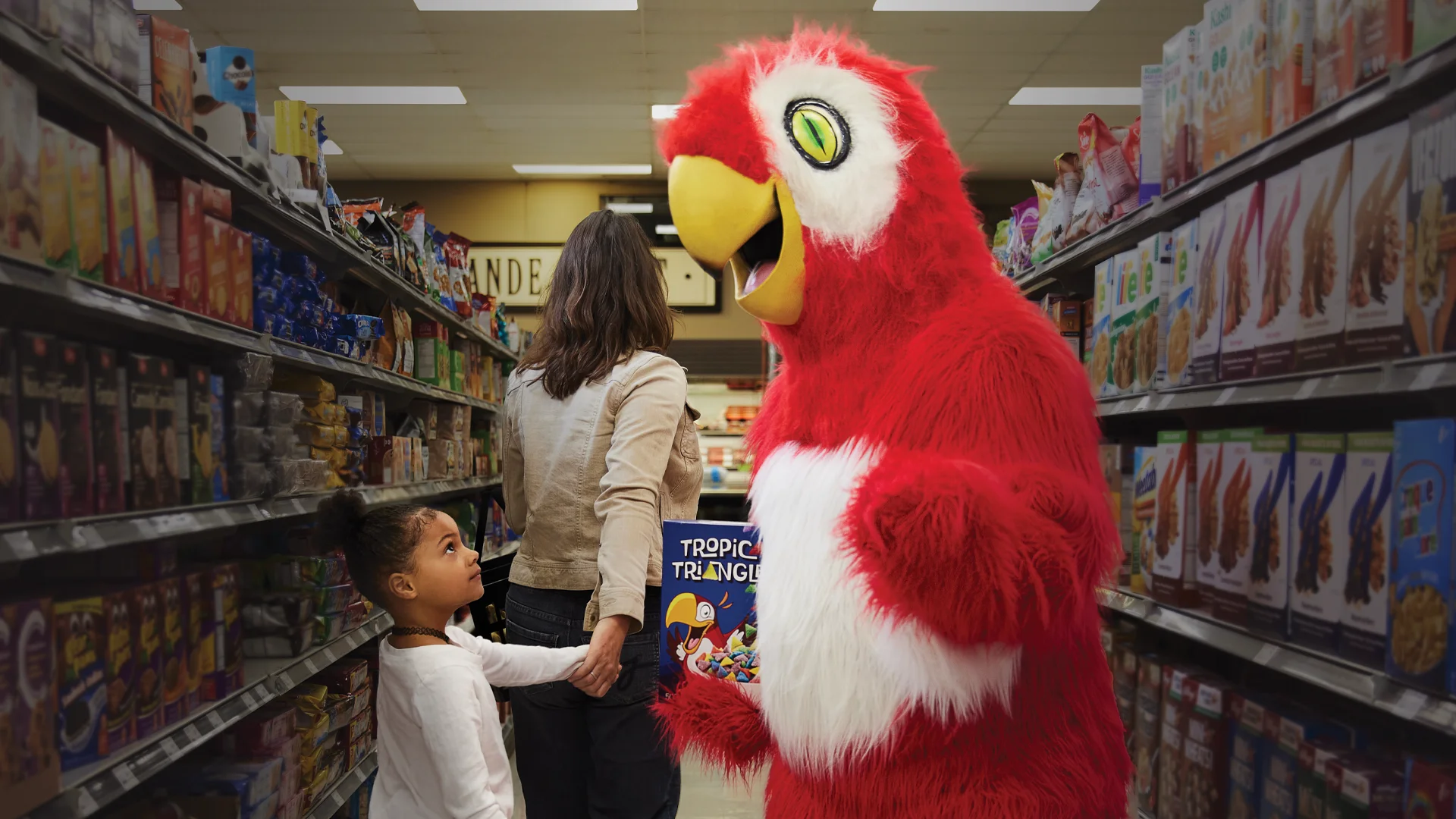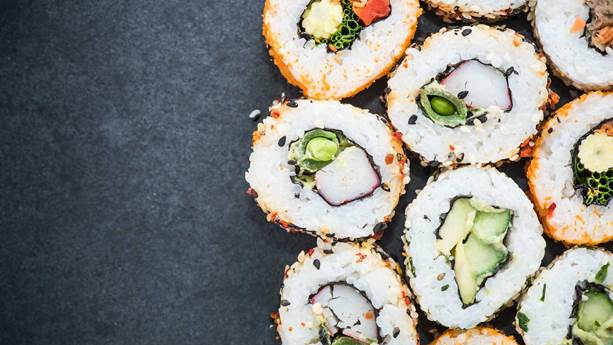Any parent or grandparent who’s braved the grocery store with a child is probably familiar with requests for sweet treats in colourful packaging covered with cartoon characters. You’re not alone if your kids prefer gummy candy to a bowl of carrots. University of Ottawa researchers recently found that cartoon characters used in food marketing really do influence children’s food preferences.
Most snacks marketed to kids are considered ultra-processed foods due to their list of ingredients (additives, preservatives, color, sugar, salt, etc.) and how they’re made (using industrial equipment). Studies link a high intake of ultra-processed foods with an increased risk of heart disease and stroke. Ultra-processed foods contribute more than 60% of the calories in the diet of Canadian children ages 9-13.
Researchers have recommended that the government restrict all characters in food advertising to children. Health Canada recently wrapped up public consultations on regulations to protect kids from food and beverage marketing. Heart & Stroke urges the Canadian government to announce these new rules as soon as possible. Until then, you’ll still need to navigate food labels, arrange after-school snacks and recess goodies that are school-safe, delicious, nutritious, practical and easy to package. Cue parental panic!
We’re here to help you navigate the marketing tricks, spot the difference between a nutritious snack and an ultra-processed one and offer 30 ideas for convenient, nutritious snacks for your kids.
Nutrient-rich snacks vs. ultra-processed snacks
Kids may not get enough nutrients from meals alone, so snack time is a perfect opportunity to provide more nourishment.
Nutrient-rich snacks provide the nutrients that children require for optimal growth and development, including protein, vitamins and minerals. These snacks contain smaller portions of the same minimally processed whole foods that you’d regularly eat at meals, such as vegetables, fruits, grains and protein-rich foods (fish, chicken, eggs, dairy, beans, nuts, etc.). Examples of nutrient-rich snacks include yogurt with fruit; banana with peanut butter; half a sandwich; or carrots with hummus. Whole food snacks should ideally be served to children between meals every day.
Ultra-processed snacks like candy, chocolate bars, granola bars, potato chips, fast food, ice cream, fries and sugar-sweetened beverages bring enjoyment rather than nourishment. They’re often high in sugar, salt and saturated fat, which become nutrients of concern when consumed in excessive amounts.
How to spot the marketing tricks: sugar disguised as a snack
The more a whole food is altered and processed, the more nutrients may be lost. Of course, it’s not always possible to serve whole foods for snacks, and sometimes we opt for a packaged snack for ease and compromise.
But here’s where it gets tricky: not every packaged snack is as nutritious as it claims.
This is one of the reasons why many kids get up to 60% of calories from ultra-processed foods – some foods seem nourishing but are ultra-processed treats in disguise.
In addition to shelving items nearer to children’s eye level and using cartoon characters to draw a child’s attention, here are a few examples of marketing tricks that food companies use to make you believe your chosen treat is a healthy snack:
| The marketing: | What it really means: | Often found on these ultra-processed foods: |
|---|---|---|
| The words “made with real fruit” | The product is likely high in sugar and has a sprinkling of fruit juice concentrate, which has no nutrient value. | Gummy candy, sweetened breakfast cereal, fruity drinks, popsicles |
| The words “made with vegetables” | Potato and corn flour are used to make processed salted snacks; sometimes a pinch of spinach, beet or carrot powder is added. | Potato chips, veggie straws, fish crackers, cookies, granola bars |
| “Organic” ingredients | Organic is a method of farming; it’s NOT a health claim. Candy made with organic sugar is still candy and is not more nutritious than any other candy. | Chocolate, ice cream, cookies, candy, chips, granola bars, sweetened beverages, boxed pasta and cheese, chicken fingers, etc. |
| The terms “natural” or “healthy” | The words ‘natural’ and ‘healthy’ are not regulated health claims and can be used on any package. They are meaningless terms. | Ice cream, baked goods, organic candy, chips, fruit beverages |
30 colourful, nutritious snack ideas for kids
Each child, household, budget, family dynamic and culture is different. If you’re unsure what is best for your family, work with a dietitian - there are often free services at your local public health unit or grocery store.
Snacks to keep in the fridge:
- Cut vegetables such as cucumber, carrot and sweet peppers
- Favorite fruits: apples, berries, melon, etc.
- Hummus or black bean dip
- Cheese strings or Babybel
- Greek yogurt
- Hard-boiled eggs
- Half-sandwich: turkey, cheese, chopped egg or tuna
- Grain salad made with pasta, barley or quinoa
- Sushi rolls
- Rice and beans
- Turkey and cheese roll-ups
- Guacamole
- Chia pudding
- Vegetable or fruit salads
- Overnight oats or oatmeal
Snacks to keep in the freezer:
- Edamame
- Mini egg quiches or mini frittatas
- Energy bites
- Homemade granola bars
- Smoothie popsicles
- Frozen fruit
- Convenient portable snacks:
- Vegetables or fruit
- Pureed fruit or vegetable pouches
- Trail mix with nuts, seeds and dried fruit
- Crispy roasted chickpeas, lentils or fava beans
- Lightly salted air-popped popcorn
- Canned tuna and cracker snack packs
- Trail mix or oat granola bars
- Canned hummus and cracker snack packs
- Nut or seed butter pinwheel sandwiches
You can also try these kid-friendly recipes that are easy to store in the fridge or freezer to use as quick snacks:
- Mom’s mini frittatas
- Instant oatmeal pumped up
- Chunky cucumber and tomato pasta salad
- Chocolate almond bites
- Carrot and edamame salad
- Protein-powered hummus
- Frozen yogurt fun
- Crispy chickpeas with pumpkin seeds and lime
- Wheat berry and apple salad
- No-bake peanut butter granola bars
- Zesty black bean dip

